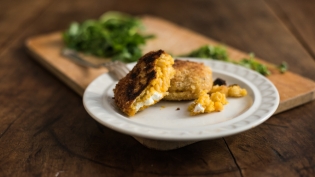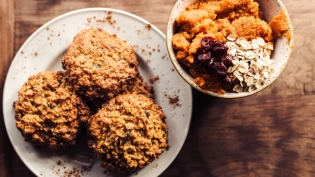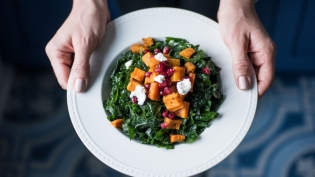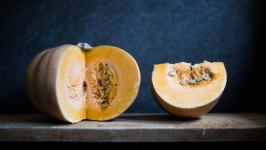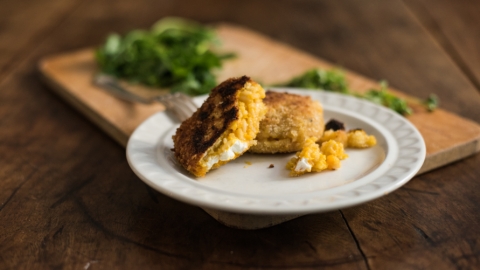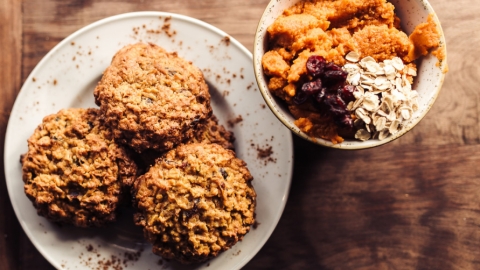Gourd-eous Winter Squash
Traditionally eaten in colder months, winter squash is actually planted in the spring or late summer and harvested in the fall. Technically a fruit, they come in a variety of flavors, shapes and sizes, with hard rinds and orange or yellow flesh and can be stored for up to six months. Winter squash is considered to be very nutritious and a good source of vitamins A and C, potassium, fiber, niacin, folic acid and iron. Winter squash are vining plants that need room to roam. If you have a small garden, set up a trellis or grow bush or semi-vining types. In Northeast Florida, they should be planted in March or August. Flavors are generally mild-to-sweet and work well with other seasonal ingredients, while the orange and yellow flesh adds a pop of color to dishes.
SPAGHETTI SQUASH
A cylindrical shape rangingin color from pale cream tobright yellow.
Flavor: Mild-tasting, not very sweet.
How to use it: Roast or steam, then scrape the flesh into strands. Alternative to pasta, in casseroles or gratins.
BUTTERNUT
Long pear shape with yellow-tan rind and thick, bright orange-yellow flesh.
Flavor: The sweetest winter squash.
How to use it: Roast or saute. Puree and use in soups. Grate raw squash as a garnish on salads. Cut the neck from the body and work with each section separately.
BUTTERCUP
Compact and round, green with pale-green striations. Firm, dense orange flesh.
Flavor: Sweet, creamy flavor and texture.
How to use it: Bake or steam. Its firm texture holds up well to stir-fry.
ACORN
Named for its acorn shape, dull green rind and orange flesh.
Flavor: Mild flavor, slightly sweet, tender flesh.
How to use it: Roast, bake, mash and saute. Great for stuffing as a main course.
KABOCHA
Large, round and squat. The name is Japanese for squash.
Flavor: Nutty, earthy flavor with a touch of sweetness.
How to use it: Roast or bake. Firm flesh holds up well in stews or soups. Use as a pie filling.
DELICATA
Oblong, cream-yellow colored skin with green yellow or orange stripes.
Flavor: Similar flavor to sweet potatoes, slightly nutty.
How to use it: Skin is edible. Slice widthwise to create scalloped circles, then roast. Also good stuffed.
HUBBARD
One of the largest winter squashes. Dark green to pale gray-blue skin.
Flavor: Rich, sweet pumpkin flavor.
How to use it: Roast and mash. Great in pies.
SEMINOLE PUMPKIN
Pear-shaped or spherical with an incredibly hard shell or rind, ranging in color from deep gold to light salmon on the outside with deep orange flesh.
Flavor: Similar to a slightly sweet butternut squash.
How to use it: Baked or roasted. Use in pies, cookies and empanadas.



